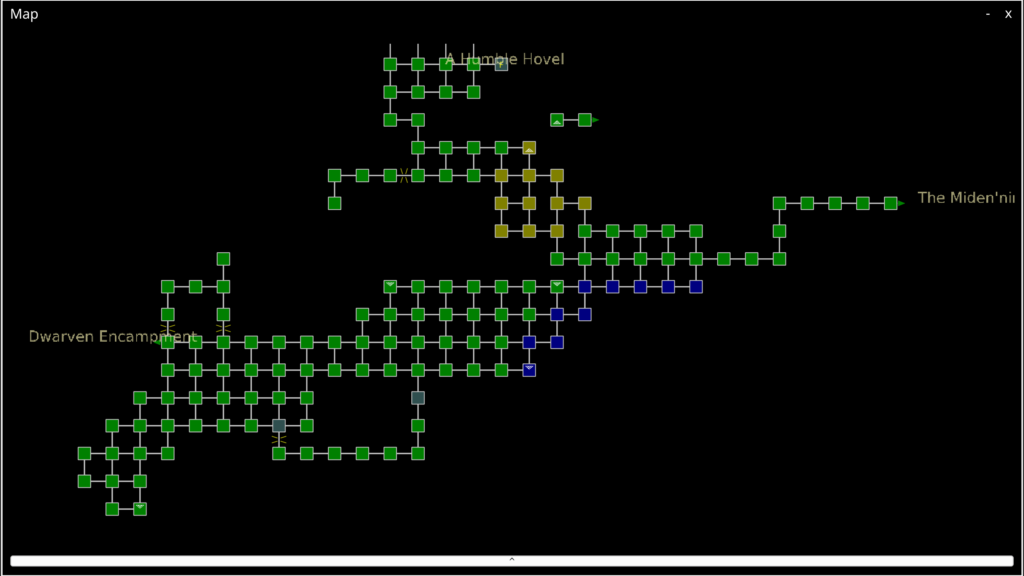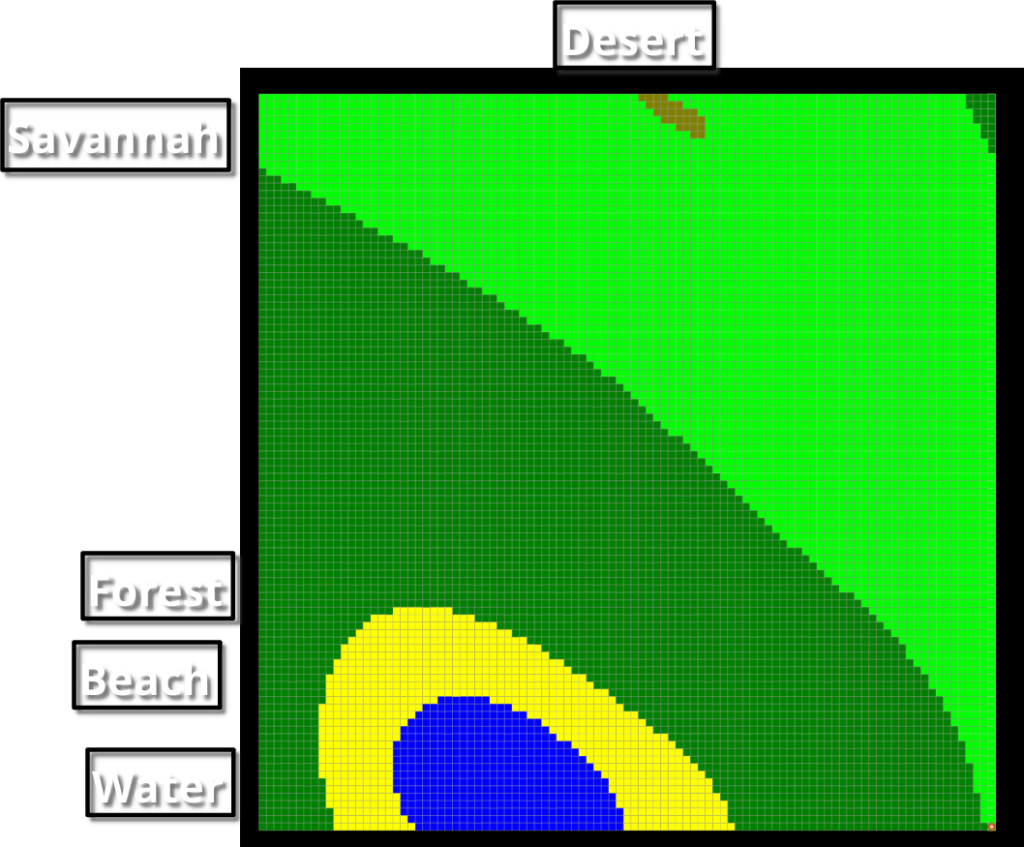Looking for inspiration for your next MUD wilderness or perhaps your tabletop RPG? Use Mudlet to create realistic maps with fractal noise generation techniques.
I have always had an interest in fantasy world maps. The inspiring thoughts of medieval battles for land and plundering pirates from far away islands combined with an interest in what fractal noise can generate graphically sent me on a quest to see what Mudlet could create, rendered right in the built-in mapper.
The typical MUD area would resemble something pictured below. Using in-game terrain information available via MSDP I was able to add colour to the rooms for more visual appeal with rivers, forest and mountains (blue, green, brown).

When you zoom in on a map in PNG you realise they are just a bunch of tiny coloured dots (which I used to represent our mud rooms). By using a grid-mode map with environment colouring for the rooms and extreme zooming (out) I ventured to replicate this technique in Mudlet for realistic looking, yet totally random, land forms.
Choosing the room colours, or terrain, uses a process called fractal noise generation. By using the right noise techniques we can create irregularities within a certain number range, say 0 to 10. Each number is also assigned a colour to symbolise its elevation. We then assign these numbers to each room in the map giving the room its elevation. 0 to 3 might be blue for water, 3 to 7 might be green for forest, 7+ might be grey or white for mountains or snow peaks. The application is very specific depending on how large the map is, how much land mass vs open water you need, mountainous vs plains land, etc..

To create a higher resolution image I needed to go large. A 1000 room by 1000 room grid (one million rooms) took about 40 hours of processing time on my struggling i5.. whoops. But with the room canvas created now it is simple to overlay some noise techniques, which is very quick in Mudlet, about eight seconds to fully generate a new world in my extra large area.
In the images below I used ten grades of blue (water), a yellow for coastline (beach), and ten grades of green through to white (forest to highlands), using noise delivered from a range of one billion possibilities.

While far from a complete map experience this shows the potential for vast worlds being represented in Mudlet using pseudorandom noise generation. Next steps? Further defining the noise by adding moisture maps, defined roads and population centers.
Want more info or wish to collaborate? Find me as Zooka on Mudlet’s Discord server.


https://www.redblobgames.com/maps/terrain-from-noise/
Thanks, this informative site is actually linked in our article.